My Family's Cars and Industry Pivots: Transverse Mounted Front Wheel Drive
The subtle intersection of my families cars and pivotal automotive industry transitions
By 1970 We had grown up. My sister Cathy, just graduated from the College of New Rochelle, started her Masters Degree in Public Communications at Boston University. She still lived at Wren Street (West Roxbury) and the MTA offered no direct or easy ways to get there (BU) from here (Wren St.). Also, she had kept her summer job waiting table at the famous Anthony’s Pier Four and commuting to and fro to Boston Harbor also required a car.
So she showed up in the Wren Street driveway with a 1966 two door MG 1100 Sports Sedan - dark green exterior and greyish blue interior!
One of the first non-AMC cars in our driveway, it astonished us. We had never seen this design and hardly ever saw imported cars other than sports cars. And on driving and riding in it we realized that the 1100 …
…handled fantastically, running fast low and hugging corners without lean,
…sported a smooth four on the floor stick shift manual transmission,
…made one feel good to sit in it with its beautifully appointed interior designs,
… took the bumps smoothly,
And sat fully four people with incredibly spacious seating and panoramic visibility for such a small, efficient size
The car amazed! We all got a chance to drive it and loved it. Cathy somehow had hit on a gem!
And it was a breakthrough in auto design. Auto journalists have called this particular 1100 ( officially the ADO16, first introduced as the Morris 1100 of 1962) the "world-wide car of decade for the 1960s", the most influential car of that decade, a car way ahead of its time in modernity and effectiveness. It was also Sir Alec Issigonis’ finest hour. 1
I acknowledge especially Roger Carr of Curbside Classics, the Authors at Motor Museum in Miniature and others for sharing in depth information on Sir Alec. I relied on them for the following.
Alexander Arnold Constantine Issigonis (Sir Alec) remains the most famous car designer of Britain. He created this 1100 design after decades of innovating better and better cars with the help of key British inventors such as Alex Moulton and supporting engineers, such as Jack Daniels and Reg Job.
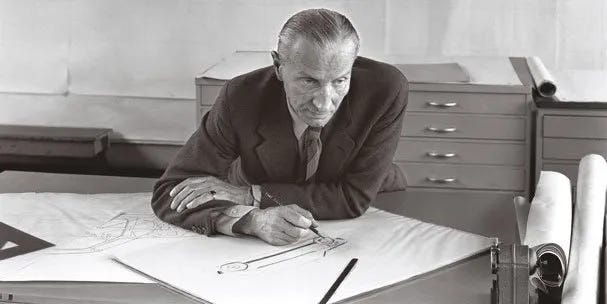
A truly international person he was the only child of German mother, Hulda Prokopp, and Greek father, Constantine Issigonis. He spent his early years living in Smyrna (now Izmir, Turkey formerly Greece) speaking German and Greek. Despite having private tutors, Alexander had difficulty with arithmetic, something that he struggled with later in his education too. Strangely Issigonis had little interest in engineering appearing to be more interested in art, encouraged by his mother.
At the end of the Greek-Turkish war in 1922 Turkey took steps to recover the lands it held as the Ottoman Empire including Smyrna. The Royal Navy Marines evacuated British Subjects, including the Issigonis family, from Smyrna before Turkey attacked. In the face of all this mayhem, Mrs. Issigonis decided to migrate with Alex to Britain, a land neither knew. As they were migrating his father died in Malta of unknown disease. There in England at age 16 Alec went off to private boarding school. His mother and he knew that Alec would need to earn a salary for both of them to live and that required an advanced degree. She wanted him to go into the arts. He, in a crucial decision, decided to become a mechanical engineer and follow his father and grandfather. He enrolled in Battersea Polytechnic in south London. Though superb at all drafting classes, he always struggled with math and ended up failing the final exams 3 times. Finally with unremitting effort he went to night school and eventually passed the exam.
From there he found a job in car engineering design and excelled at numerous British automotive firms. Soon his outsized talent was truly recognized and at 30 years old he became the chief architect of Morris Motors post war car, the Morris Minor.
Morris Minor
Issigonis argued successfully for a number of innovations including, a very rigid chassis integral body construction, with independent front suspension using torsion bars and the engine mounted low and as far forward as possible. His careful and thoughtful suspension and rack and pinion steering design (American automotive manufacturers did not offer rack and pinion steering until 1974 - Ford Mustang II and Pinto2 ), as well as the comparatively low weight of the car, insured excellent handling and superb comfort and space. These made it a post war success and it remain one of the most recognizable and loved British motorcars - even though William Morris (Lord Nuffield) didn’t like it, naming it “the poached egg."
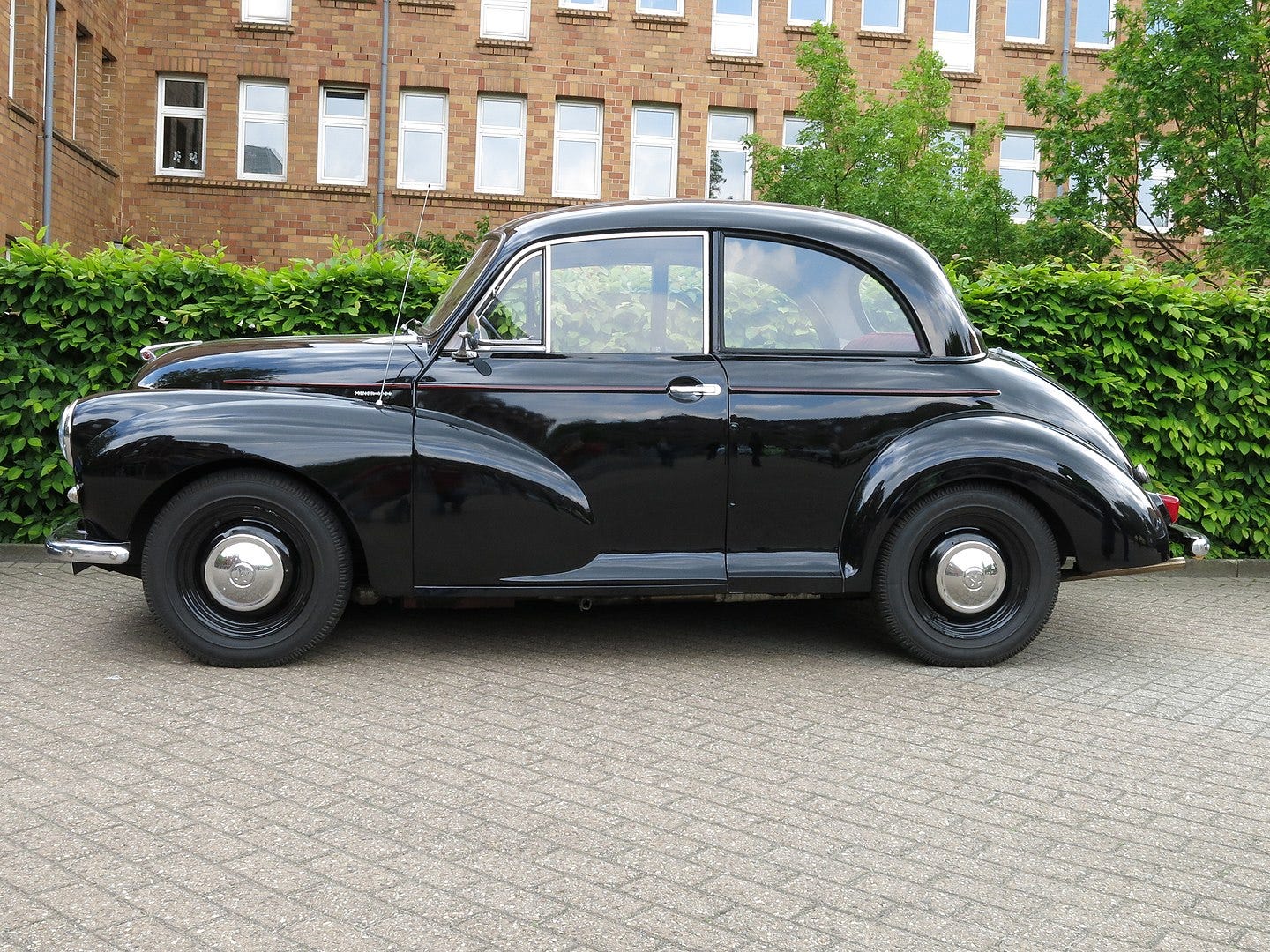
In the course of his growth as a designer he showed a remarkable power of imagination and visualization, always presenting and thinking with freehand drawing
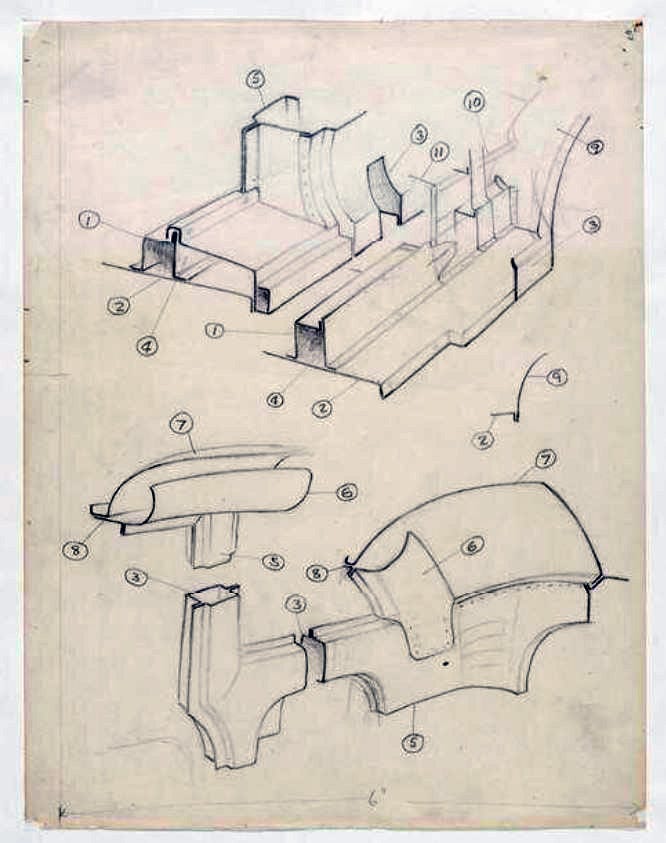
He also seemed to connect to just the right folks to complement his skill. E.g. he befriended Mr. Alex Moulton, a superb innovator and inventor of automobile suspensions. Morris executives seeing his unusual talent and imagination but recognizing the need to anchor him in the nuts and bolts, math-intense process of converting ideas into detailed engineering designs, assigned Mr. Reg Job and Mr. Jack Daniels to him. “Job and Daniels ability to translate Issigonis impressionistic sketches into workable drawings was crucial to the end result. Daniels discrete control over interpretation of the ideas saw proper dimensioned engineering drawings emerged from Issigonis’ sketch-pad and a dramatically different motor car started come into being.”3
Morris Mini
The next big opportunity arrived arrived as the end of 1956 the Suez Crisis caused fuel rationing. People wanted fuel efficient cars and Britain was flooded with small, cheap foreign cars, particularly the phenomenally popular Volkswagen Beetle and the Fiat 500. BMC was in trouble.
Alec was ‘ordered’ to get a small car into production as quickly as possible to compete with the Beetle et al. This instruction was something Issigonis had been longing for. Morris set up an entirely new department to design a fuel-efficient, inexpensive, four-seater vehicle (the Mini) to regain a market share for BMC.
Here’s how he describes the overall design with his everpresent black pen and large paper sheets.
Issigonis’ radical solutions for this design goal seem so obvious to us today but they were huge engineering difficulties to overcome:
saving space by turning the engine to a transverse mounting,
putting the gearbox under the engine rather than behind it,
making the sump and gearbox share the same oil and
using a front wheel drive system and thus doing away with the gearbox and transmission tunnel that ran through the center of conventional cars, increasing space,
driving power through and steering with the same wheels,
moving the radiator to the side of the car and making a grill opening that was unobstructed as possible to give free cooling air into the engine bay then reverse the fan to push the cooling air out through the radiator at the side rather than sucking it in through the front.
All of these were firsts.

The engine right over the front wheels gave a nose heavy weight distribution which aided front end traction and stability and lowered the car’s center of gravity. He chose the smallest wheels possible and pushed them as far into the corners as possible helping the car’s feel and stability. For the suspension Issiginos worked with Alex Moulton to use rubber cones instead of springs for suspension, saving weight and space.
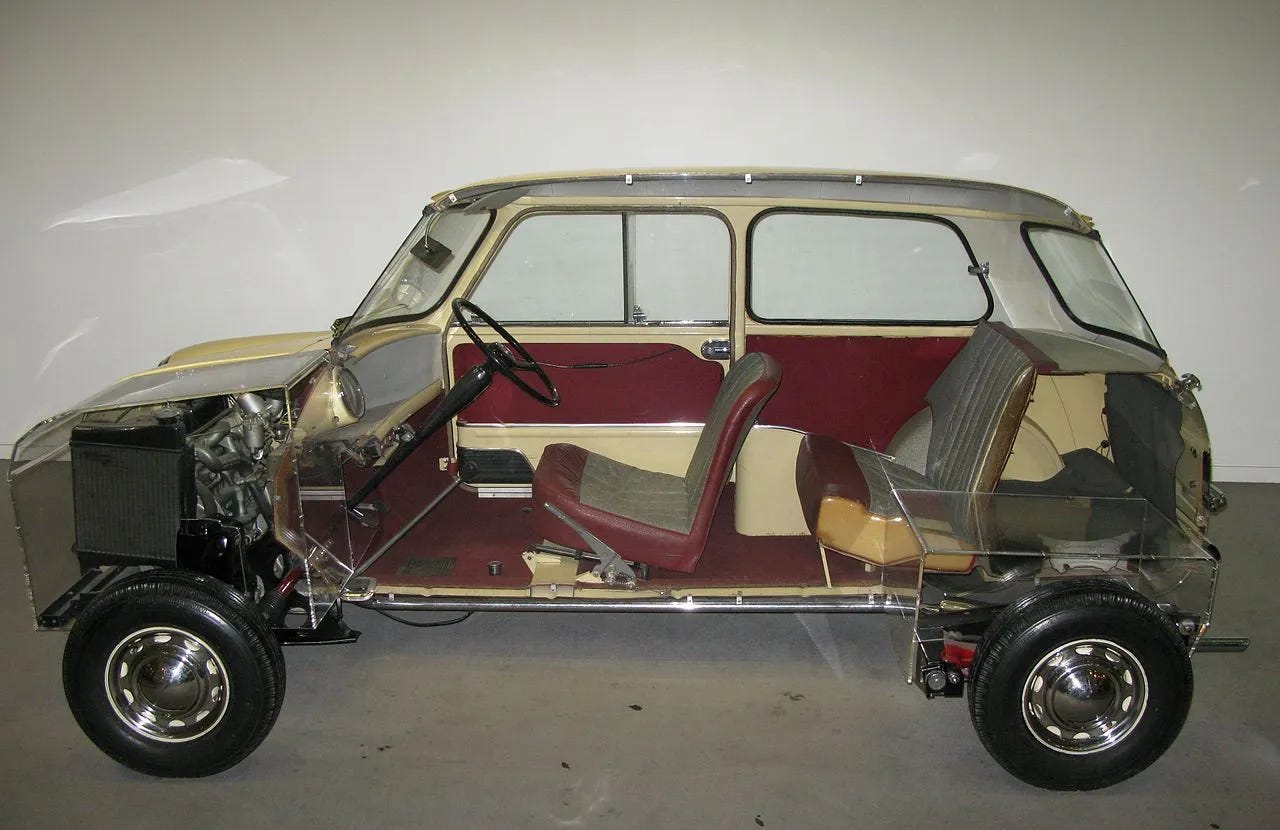
Morris launched it in 1959 and once the road tests started the motoring press raved about the car. Mini’s had lively performance and tenacious front-wheel-drive handling, had exceptional space efficiency were practical and affordable. All gave the little car a unique personality which made it an icon. In 1959, BMC became the world's fifth-largest motor manufacturer selling 430,000 cars, largely thanks to the Mini.
Even more significantly, it defined the configuration of the small and medium car for the next 50 years.
Morris ADO16
The Mini was an expedient reaction to the fuel shortage — the smallest conceivable way to seat four adults, but it really wasn’t family-friendly and dealers and British Motor Corporation executives disliked the thin profits of the spartan Minis. Minis became a sporty-specialty car.
Then came the 1100. In the words of Roger Carr, “.. my belief is that the follow-on to the Mini, the ADO16, was even better [than his breakthrough Mini].” The first car to repeat the concept of the Mini, Issigonis’ ADO16 would continue Alec’s maximization of passenger space combined with the best possible road holding.
It appeared as the Morris 1100 in 1962, with smart, modern Italian styling by Pininfarina, a Mini-based drive train of the transverse engine with the gearbox in the sump, an enlarged and more powerful engine, and an advanced and very effective suspension. It came at a time when competitors were still using leaf springs, and recirculating ball steering. this was a car that even non-car people would have seen as significant, attractive and affordable. It was Sir Alec Issigonis’ finest hour
Cathy’s MG 1100’s Demise
Unfortunately, like most British cars of the day in New England, extreme cold often caused it to “avoid” starting up in the morning — a continual problem at Wren Street in January and February. But my father thought up a solution. He put a “drop light” (incandescent bulb lit caged utility light) in the cars engine area and covered the entire engine with a quilted “drop” cloth. Now the warmth of the bulb, kept close to the engine by the blanket, prevented the engine from getting so cold over night and allowed easy morning starts. Great.
Then one morning he woke up to smoke coming from the garage and an acrid smell. The extension light had caused a smoldering fire. The fire had wiped out all wires and non metal material in and around the engine. BAD.
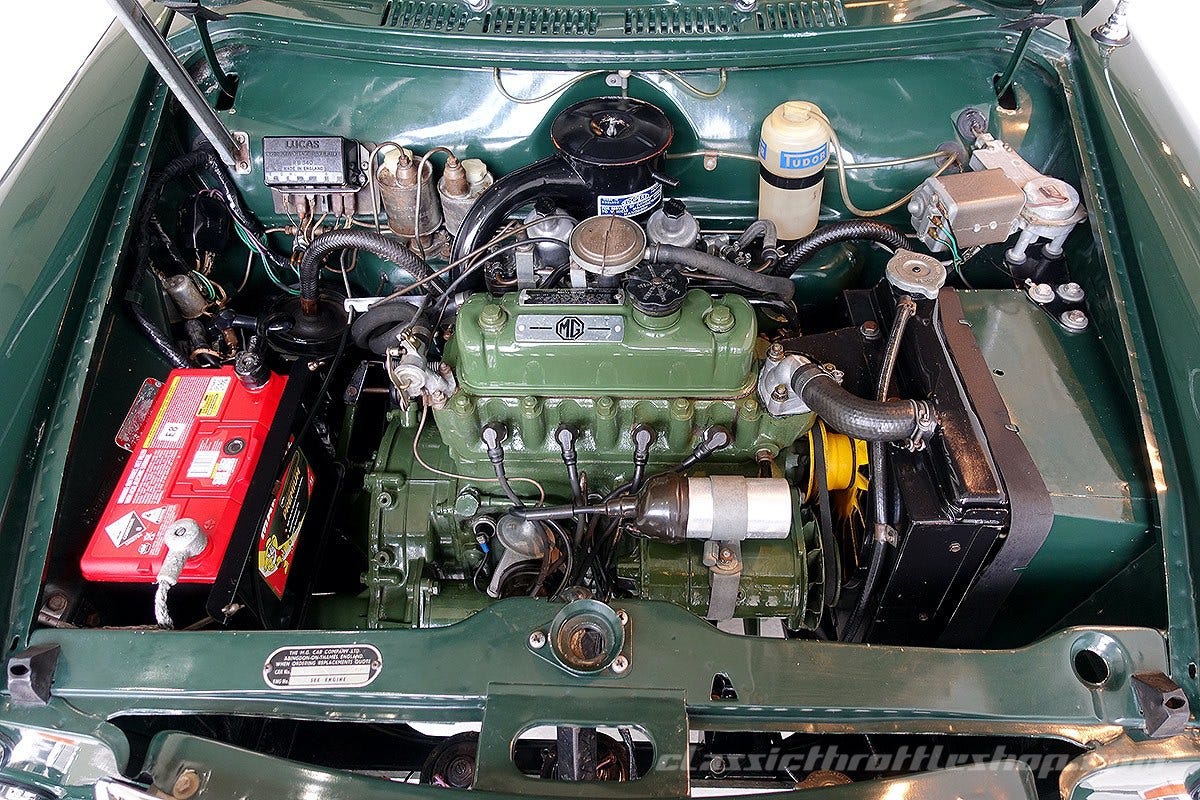
Dealers declared the car a total loss. Very sad all around. My father bought Cathy a brand new 1971 Austin America. It was modelled after the MG, but it just wasn’t the same as the MG and, sadly, it used an automatic transmission. yuk.
All things must pass, but this felt like the worst. We should still be driving it maybe. But according to this web entry - author anonymous 1100’s and Austin America’s suffered a…
“…Sad Fate
Unfortunately, most of the cars were plagued with numerous mechanical problems and in damp climates, severe rust. In the U.S.A., they suffered from being underpowered and not able to withstand the fast freeway driving to which the American consumer was accustomed. Since the automatic transmission version was heavily advertised and sold, it subsequently failed most often. Like the manual transmission, the automatic, also being the oil pan, ran in the engine oil. This made it extremely succeptable to failure and many of the automatics were in for transmission repairs while still under warranty.
Since the engine and transmission shared the same oil, and sat one on top of the other, when one failed, it often caused problems and damage to the other. The cars gained a reputation for being unreliable and they soon paled in comparison to the VW's, Hondas, Datsuns and Toyotas of the time. With an original sales price of between $1,900.00 to $2,200.00, it was probably difficult to justify the expense of rebuilding an engine or transmission after a serious failure, when the car was only a few years old. A testiment to this is the number of Americas that used to be in the wrecking yards with less than 50,000 miles on the odometers.Fate of a great car:
The final fate of many Americas was as engine donors for the Mini enthusiasts who were looking to replace their smaller engines with a 1275cc engine. The bodies which didn't share anything in common with their little brother Minis were then scrapped at the wrecking yard.
Today, very few remain. Of those that are left, even fewer are still on the road and fewer still are driven regularly. A sad fate for a car that, along with the Mini, is credited with being the first mass produced front wheel drive passenger car. And, a car that ultimately set a design standard by which "economy" cars still follow. “
Interesting Story Points about Cathy’s 1100
My younger brother Chris, at age 12, who liked to drive everything that came into the driveway,….

…managed to master the standard four on the floor manual shift by driving it up and down the driveway. According to one urban legend he once got it from first to second to third before jamming on the brakes just before the garage.
Final Story
Cathy married about a year after getting the Austin and she sold off her car to ride with Jim in his 1971 Dodge Swinger. Talk about different taste in cars. She let go of her own preferences and reverted to old school American cars again. (But it lasted better!)
Such is love.
Morals of the Story
The visual, wordless, art-making right side of the brain (Issigonis) comes up with holistic innovation; it needs the left brain’s math / words (Daniels) to instantiate it.
Idealized Design - Start with an Ideal; start with “What You Want” and believe it can be done. Aim for what you want not what you don’t want and work towards it.
For creativity, support children in right brain development: hand writing script, drawing, etc. and teach them to cooperate kindly. (Traits of Issigonis’ Teams)
Quality and reliability beat good design. Toyota’s low frequency-of-repair cars gained share on cars with superior design (Austin America) but lower durability.
___________________________________
Notes:
1966 MG 1100 2 Door Sedan - STOCK #F217. (n.d.). Classic Car Dealership - Specialty Sales Classics. https://www.specialtysales.com/vehicles/1966-mg-1100-217
1966 MG 1100 2 Door Sedan - same as Cathy's
Ammone, S. (2018, August 31). Drawing inferences: Thinking with 6B (and sketching paper). SpringerLink. Retrieved December 18, 2022, from https://link.springer.com/article/10.1007/s13347-018-0323-5
source of Morris sketch
Carr, R. (2020, March 21). Curbside classic: 1965 MG1100 (ADO16) – BMC’s greatest hit. Curbside Classic. Retrieved December 18, 2022, from https://www.curbsideclassic.com/curbside-classics-european/curbside-classic-1962-mg1100-issigoniss-greatest-achievement/
Carr, R. (2020, March 21). Curbside classic: 1965 MG1100 (ADO16) – BMC’s greatest hit. Curbside Classic. Retrieved December 18, 2022, from https://www.curbsideclassic.com/curbside-classics-european/curbside-classic-1962-mg1100-issigoniss-greatest-achievement/
Carr, R. (2022, November 1). Biography: Sir ALEC issigonis – The designer of Britain’s favourite cars, Britain’s favourite car designer. Curbside Classic. Retrieved December 17, 2022, from https://www.curbsideclassic.com/biography/biography-sir-alec-issigonis-the-designer-of-britains-favourite-cars-britains-favourite-car-designer/
History. (n.d.). Retrieved December 17, 2022, from https://members.tripod.com/austin_america/id1.html
If the mini was a family saloon: 1964 MG 1100 sports Sedan. (n.d.). Zero260. https://www.zero260.com/posts/if-the-mini-was-a-family-saloon-1964-mg-1100-sports-sedan
Johnston, K. (2020, November 2). 1965 MG 1100 sport Sedan. Classic Throttle Shop. Retrieved December 17, 2022, from https://classicthrottleshop.com/1965-mg-1100-sport-sedan/
Bays 3+4 50-64 Pacific Highway, North Sydney NSW 2060 Australia
MG 1100 Brochure - MG Car Company Ltd. (1964, September). Home Dezo's Garage - American & Foreign PDF Car Brochures. https://xr793.com/wp-content/uploads/2022/12/1964-MG-1100-UK.pdf
Microcar. (2022, November 8). Wikipedia, the free encyclopedia. Retrieved December 18, 2022, from https://en.wikipedia.org/wiki/Microcar#Bubble_cars
competitive progenitor of design
The motor Museum in miniature. (n.d.). The Motor Museum in Miniature. https://www.themotormuseuminminiature.co.uk/inv-alec-issigonis.php
most comprehensive bio of Alec found on the web
Rack and Pinion steering: Everything you need to know. (2020, March 9). Car and Driver. Retrieved December 18, 2022, from https://www.caranddriver.com/research/a31267607/rack-and-pinion-steering/
took till 1974 for Ford first us automaker to add it to Muistang. Was in use in Europe via BMW from the 1930's
Sir ALEC issigonis. (2022, November 14). Encyclopedia Britannica. Retrieved December 18, 2022, from https://www.britannica.com/biography/Alec-Issigonis
The story of the a series engine. (n.d.). MG Car Club. Retrieved December 17, 2022, from https://www.mgcc.co.uk/articles/the-story-of-the-a-series-engine/
'The bigger, better mini' - 1964 MG 1100 and 1971 Austin America. (2022, September 11). Hemmings. Retrieved December 19, 2022, from https://www.hemmings.com/stories/article/the-bigger-better-mini-1964-mg-1100-and-1971-austin-america
Victoria, & Museum, A. (n.d.). Drawing | Sir ALEC issigonis | V&A explore the collections. Victoria and Albert Museum: Explore the Collections. https://collections.vam.ac.uk/item/O200049/drawing-sir-alec-issigonis/
Wikiwand. (n.d.). Wikiwand. Retrieved December 18, 2022, from https://www.wikiwand.com/en/Mini_(Mark_I)
cutaway picture of first design
Carr, R. (2020, March 21). Curbside classic: 1965 MG1100 (ADO16) – BMC’s greatest hit. Curbside Classic. Retrieved December 18, 2022, from https://www.curbsideclassic.com/curbside-classics-european/curbside-classic-1962-mg1100-issigoniss-greatest-achievement/
Rack and Pinion steering: Everything you need to know. (2020, March 9). Car and Driver. Retrieved December 18, 2022, from https://www.caranddriver.com/research/a31267607/rack-and-pinion-steering/
The motor Museum in miniature. (n.d.). The Motor Museum in Miniature. https://www.themotormuseuminminiature.co.uk/inv-alec-issigonis.php





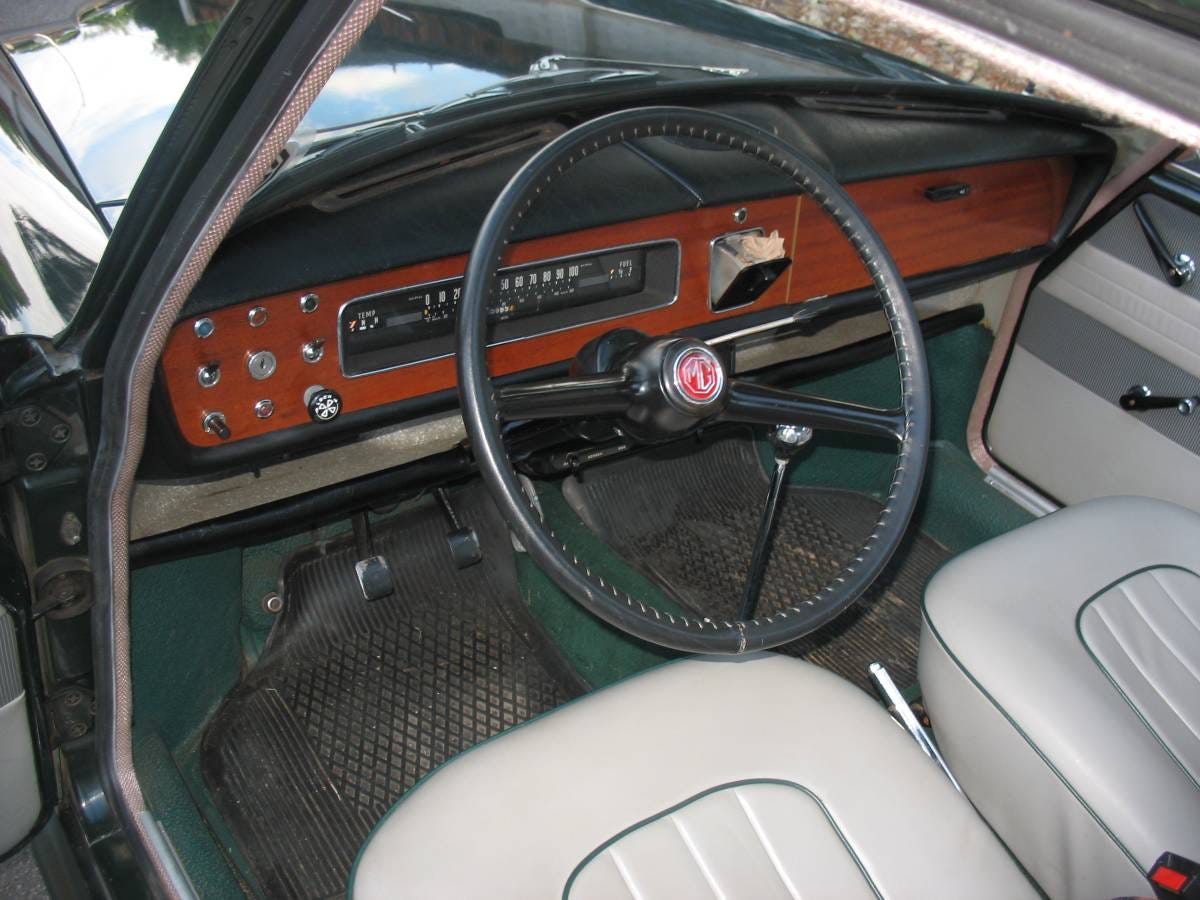

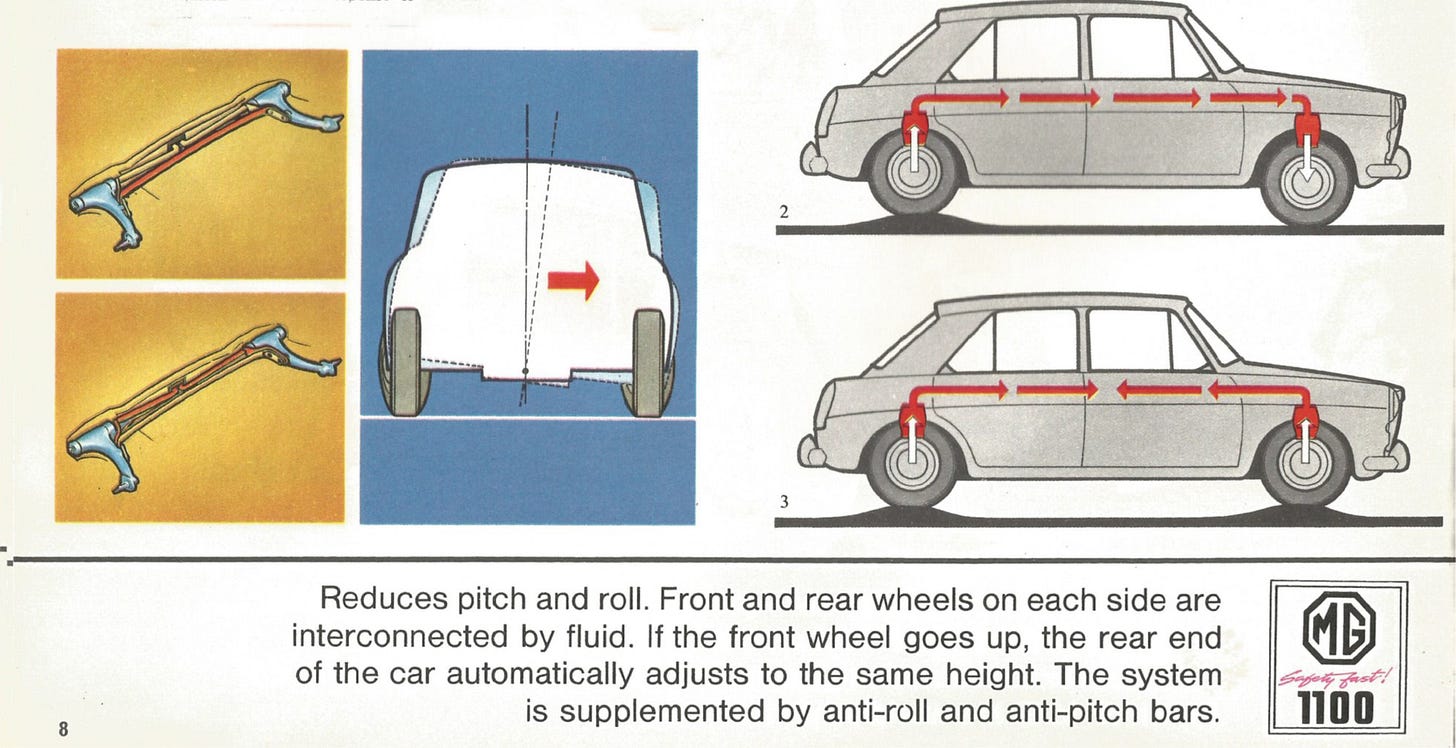
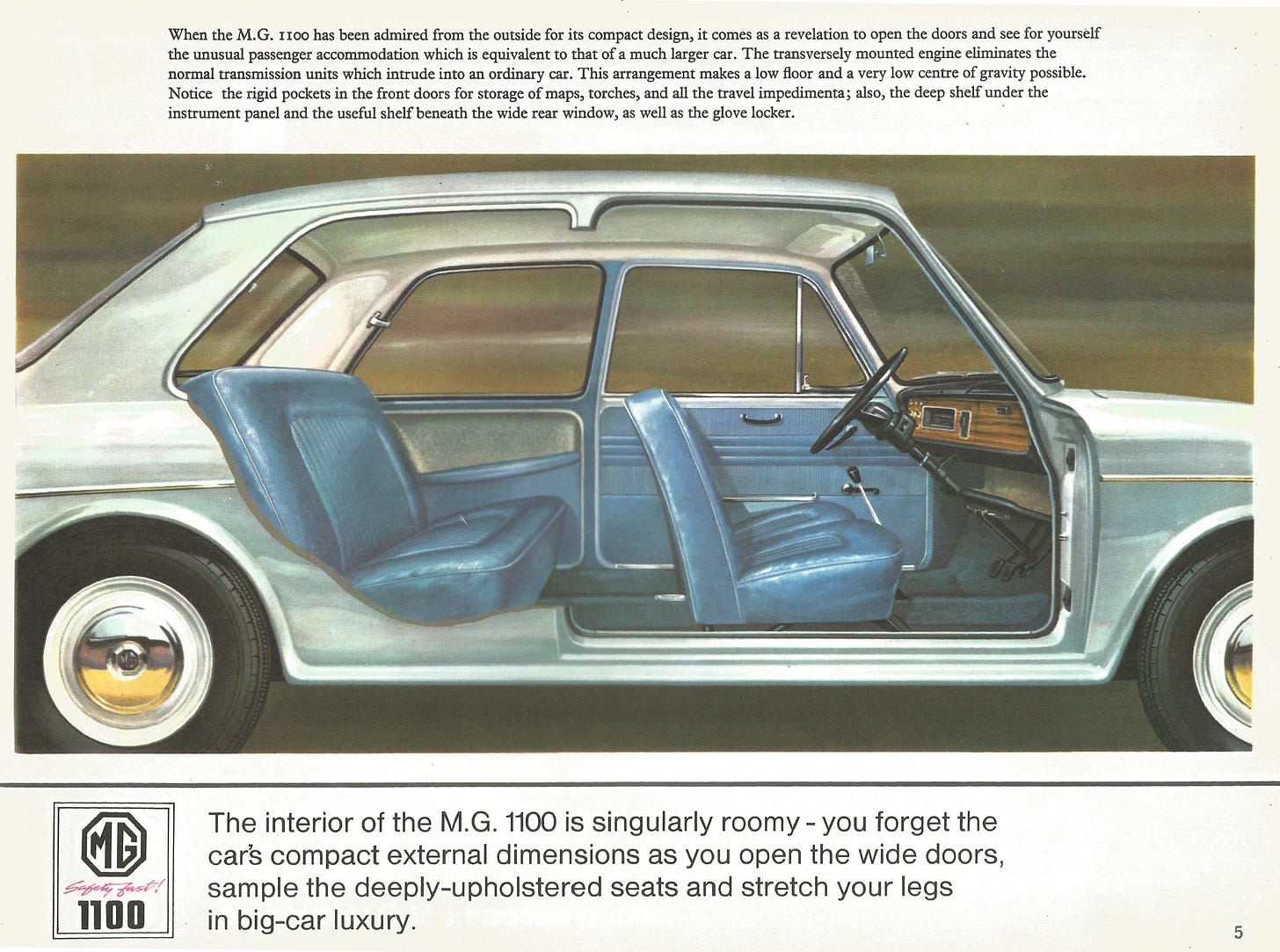

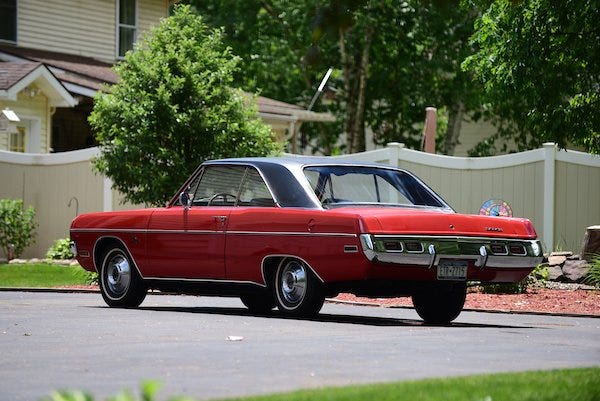
I still remember seeing a billboard for the two-pedal Austin America: “You’ll love it automatically.”
I drive a first-generation Scion xB. Like most modern front-drive cars it owes a lot to Issigonis. I’m guessing its size and interior room is close to that of the ADO16. It’s okay over smaller bumps, but for larger jolts the Moulton suspension might be welcome. I’d still want to keep the large rear hatch and Toyota quality, longevity
Yes. I probably should yank that burnt engine pic. Its of a van that RobsEyes put up. Let me pull that to avoid confusing people. Thanks for pointing that out. (I had wanted a before and after but not working)
Re MG 1100's for sale ... yes. Very rare. I include pictures from the right drive one that was offered in Australia. I have seen only a few around.
Maybe more available in England??
Very cool car.